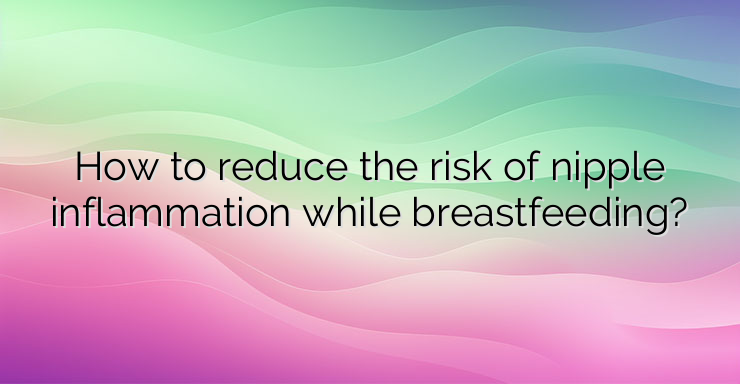The World Health Organization describes breastfeeding as “the best source of nutrition for infants and young children” and recommends that babies be exclusively breastfed for the first six months. Breast milk contains the perfect combination of nutrients for growth and development, as well as disease-fighting factors that can help protect against infections and reduce a child’s risk of lifelong problems such as diabetes and obesity. Breastfeeding also has benefits for mothers, such as making it easier to lose pregnancy weight and even reducing the risk of some cancers. Despite the many benefits for both babies and mothers, any woman who has breastfed a baby knows that it is not always easy. But if new mothers (and their partners) know what to expect and have coping strategies, breastfeeding can be a very rewarding experience for both mother and baby. Is nipple pain normal? Sore nipples are common when breastfeeding. Breastfeeding, however, should not harm or cause discomfort. Mild sensitivity is quite common during the first week or two of breastfeeding. After that, however, it should disappear. What are some possible causes of sore nipples? If the nipples feel painfully inflamed or bruises appear in the area of the areola, it is probably related to an incorrect clamping process or ineffective sucking. Difficulties with breastfeeding the baby may be suspected if the nipples become very red, painful or cracked. Difficulty closing or sucking or a structural variation in the baby’s mouth can result in nipples that appear wrinkled or white at the end of a feed. When nipples become red and sore or feel extremely sore after weeks or months of painless breastfeeding, it may be due to a yeast infection, such as thrush. Yeast can appear as white patches in a baby’s mouth or appear as a bright red diaper rash. Specific medications are needed to treat fungal infections. What should you do to treat sore nipples? Recommendations include the following: Lanolin cream or your own breast milk to keep the nipples hydrated. Wearing loose clothing and a comfortable bra. Change nursing pads often to keep them clean and dry. Use mild soap and water to clean the breasts and nipples Avoid any harsh soaps or chemicals that can dry out the nipples. This can cause the skin to crack. Finding the cause of sore nipples can be difficult. Sources: https://www.hopkinsmedicine.org/health/conditions-and-diseases/breastfeeding-your-baby https://www.hopkinsmedicine.org/health/conditions-and-diseases/sore-nipples


Leave a Reply